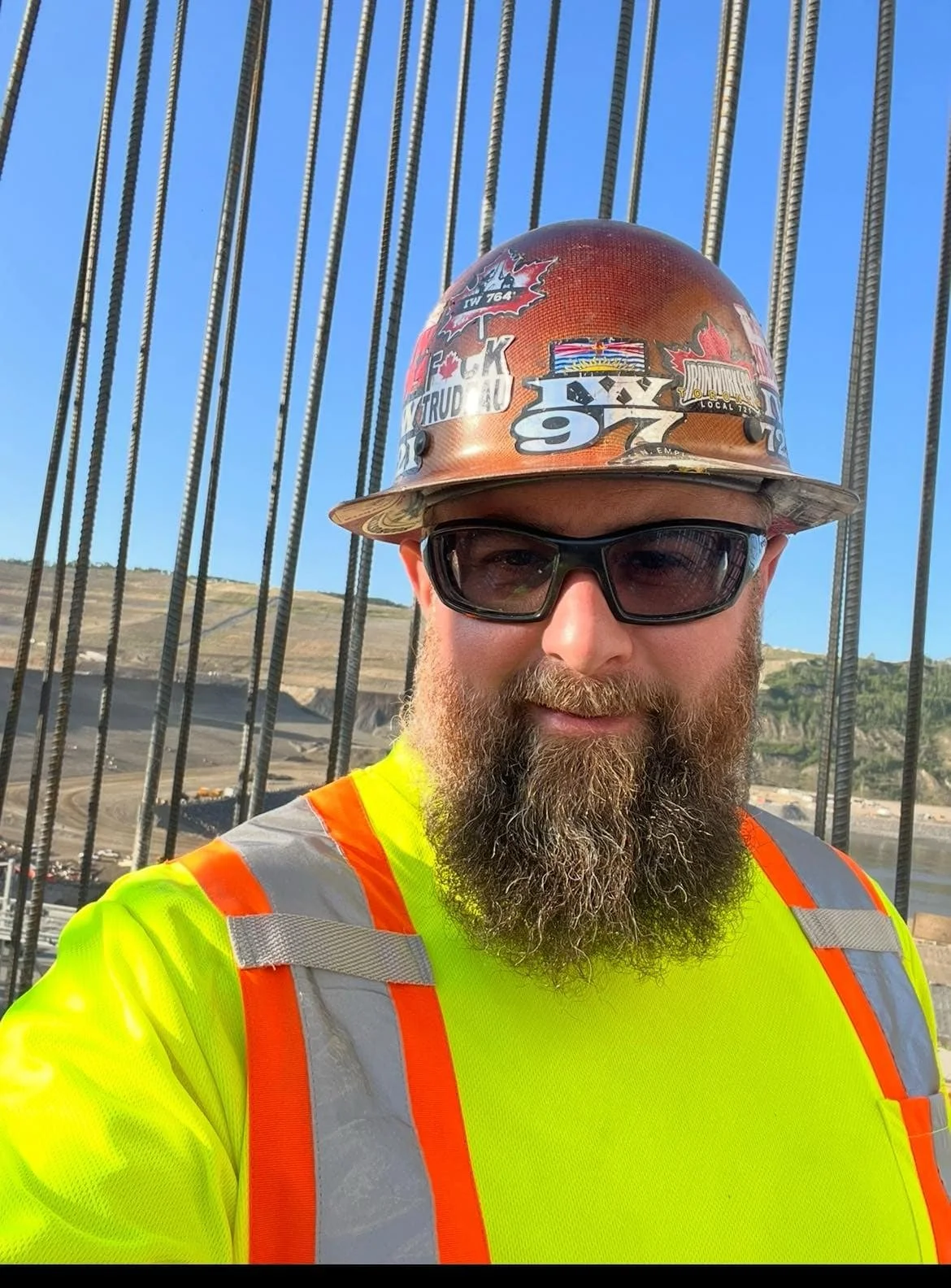Guiding You on Your Journey to Wellness
I'm Jacob Perich, a passionate and dedicated physiotherapist committed to helping individuals overcome chronic pain and reclaim their lives.
Welcome to Pacific Pain Centre
Living with ongoing pain can feel overwhelming, confusing, and deeply frustrating. Maybe it started after an injury, maybe it came out of nowhere, but no matter how it began, the pain just won’t go away. You’ve tried all the traditional treatments, seen all the specialists, done all the tests and exams, but nothing has offered lasting relief.
At Pacific Pain Centre, we specialize in helping people recover from chronic and neuroplastic pain. Pain that continues even after tissues have healed or when pain seems to have taken on a life of its own. This kind of pain is common and often misunderstood. It's not just about damage; it’s about a nervous system that has become sensitized and overprotective.
We offer virtual physiotherapy sessions to clients across British Columbia, using a science-based, whole-person approach that combines education, nervous system regulation, and graded movement strategies. Our goal is to help you understand your pain, calm the system, and return to the things that matter most.
If you’re feeling stuck, unheard, or unsure of what to do next, you’re in the right place.
-
Chronic pain is defined as pain that lasts longer than 3 months, beyond the usual healing time for an injury or condition. But in many cases, chronic pain is not caused by ongoing tissue damage. Instead, it is caused by a change in how the nervous system processes information.This is known as neuroplastic pain, a form of pain that results from the nervous system becoming more sensitive and protective over time. The brain and spinal cord ssentially learn to keep producing pain, even when the body is no longer injured. This heightened sensitivity is called central sensitization (Woolf, 2011).
Neuroplastic pain is:Real
Common
Caused by a sensitized nervous system, not injury
Reversible
Pain that persists after normal healing, spreads without injury, or worsens with stress or emotion often points to a nervous system issue, not a structural one. The good news? Because the brain and nervous system are plastic, they can change. With the right input, pain can be unlearned and regulated again (Moseley & Butler, 2017). -
Chronic pain is one of the most common and costly health issues in Canada and around the world. It affects nearly 1 in 5 Canadians (Schopflocher et al., 2011) and is the leading cause of disability globally (GBD 2016; Vos et al., 2017).
The burden of chronic pain includes:Physical limitations and reduced activity
Poor sleep and ongoing fatigue
Anxiety, depression, or frustration
Strain on work, relationships, and daily function
Repeated, costly healthcare visits, often without answers
Economically, chronic pain costs the Canadian system $56–60 billion annually, more than cancer, heart disease, and HIV combined (Phillips, 2008; Lynch et al., 2011). Yet despite its impact, many patients receive inappropriate, ineffective and unnecessary treatment and
procedures.Our mission is to change that by addressing the root cause: the overactive, sensitized nervous
system. -
Chronic pain doesn’t always begin with severe injury or trauma. In fact, many people develop persistent pain after minor injuries, surgery, stress, or illness. What matters most is not the severity of the original event, but how the nervous system responds.
Factors that can lead to the development of chronic pain include:Acute injury or repetitive strain (e.g. lifting, bending, whiplash)
Surgery or immobilization
Emotional or psychological stress
Trauma or adverse life events (especially during childhood)
Prolonged fear, anxiety, or uncertainty about pain or symptoms
Poor sleep, fatigue, and system overload
Viral infections or illnesses (e.g. post-viral fatigue, long COVID)
These events can trigger a protective response in the brain and spinal cord, leading to increased pain sensitivity, muscle guarding, and reduced pain thresholds, a process known as central sensitization (Woolf, 2011; Nijs et al., 2014).
In people with certain risk factors, like high stress, emotional trauma, anxiety, or low social support, the nervous system may stay in this protective mode longer, which sets the stage for chronic pain to develop (Linton & Shaw, 2011).
-
Pain becomes chronic not because your body is broken, but because your nervous system has learned to stay “on high alert.” This is known as central sensitization, and it's one of the most well-documented mechanisms behind persistent pain (Latremoliere & Woolf, 2009).
Once pain becomes chronic, the nervous system becomes more efficient at detecting and amplifying pain, even when tissues are healed. Signals that wouldn’t normally hurt, like movement, pressure, or even stress can trigger a pain response.
Common contributors to ongoing pain include:Fear of movement or re-injury (kinesiophobia)
Catastrophic thinking or worry about damage
Ongoing stress, burnout, or trauma
Overprotective movement patterns (e.g. bracing, limping)
Low sleep quality and poor recovery
Lack of understanding or support from the healthcare system
These factors reinforce the brain’s danger signals and can strengthen pain pathways through a process called neuroplastic reinforcement. Essentially, your brain becomes better at producing pain the longer it practices it (Moseley, 2003; Apkarian et al., 2009).
The hopeful part? These pathways can also be weakened. Just as pain can be learned, it can be unlearned through education, exposure, regulation, and reconnection to safe movement and experience (Van Griensven et al., 2020).
-
Chronic pain can look very different from person to person, but there are some common patterns that often point to a sensitized nervous system, rather than ongoing damage.
You might be dealing with chronic or neuroplastic pain if you notice:Pain that moves around or spreads beyond the original area
Pain that doesn’t match imaging findings (e.g. nothing “wrong” on the scan)
Pain that flares with stress, fatigue, or emotional triggers
Sensations like burning, numbness, or tingling without clear nerve damage
Pain that improves with distraction, relaxation, or exercise
Increased sensitivity to touch, temperature, sound, or pressure
Co-occurring symptoms like fatigue, anxiety, brain fog, or poor sleep
A history of trauma, grief, or emotional suppression
These are signs that your pain may be maintained by central nervous system sensitization, rather than structural tissue damage (Nijs et al., 2014; Clauw, 2015; Yunus, 2007). In fact, many people with chronic pain show normal imaging results, but still experience intense and life-limiting symptoms.
This kind of pain is very real, it just requires a different approach than traditional injury-based rehab. That’s where we come in
-
We work with clients virtually across British Columbia, offering personalized 1-on-1 physiotherapy sessions over a secure video platform.
Our approach is designed specifically for people living with chronic or neuroplastic pain, and includes:Pain neuroscience education
Nervous system regulation tools (e.g. breathwork, pacing, grounding)
Graded movement and desensitization strategies
Ongoing support, coaching, and collaboration
You don’t need to leave your house or commute to a clinic. All you need is a quiet space, a device with a camera, and the willingness to explore a modern, compassionate approach to healing
-
Yes, our sessions are covered by most extended health insurance plans in British Columbia. As long as your plan includes physiotherapy (which most do), you can submit your receipts for reimbursement. We provide all necessary documentation and can guide you through the process if you’re unsure about your plan’s specifics.
-
Apkarian, A. V., Hashmi, J. A., & Baliki, M. N. (2009). Pain, 152(Suppl 3), S49–S64.
Clauw, D. J. (2015). Best Pract Res Clin Rheumatol, 29(1), 6–19. Latremoliere, A., & Woolf, C. J. (2009). J Pain, 10(9), 895–926.
Linton, S. J., & Shaw, W. S. (2011). Phys Ther, 91(5), 700–711.
Lynch, M. E., et al. (2011). Pain Res Manag, 16(3), 189–194.
Moseley, G. L. (2003). Manual Therapy, 8(3), 130–140.
Moseley, G. L., & Butler, D. S. (2017). Explain Pain Supercharged. NOI Group.
Nijs, J., et al. (2014). Expert Opin Pharmacother, 15(12), 1671–1683.
Phillips, C. J. (2008). Expert Rev Pharmacoecon Outcomes Res, 8(6), 593–600.
Schopflocher, D., et al. (2011). Pain Res Manag, 16(6), 445–450.
Van Griensven, H., Strong, J., & Unruh, A. (2020). Pain: A Textbook for Health Professionals (3rd ed.).
Vos, T., et al. (2017). Lancet, 390(10100), 1211–1259.
Woolf, C. J. (2011). Pain, 152(3 Suppl), S2–S15.
Yunus, M. B. (2007). Semin Arthritis Rheum, 36(6), 339–356
-
Helps reduce fear of movement and catastrophizing
Helps patients understand that more pain does not equate to more
damage.Patients understand that their nervous system is overprotective
Improved self-efficacy. Patients understand why they hurt
Targets the contributing maladaptive beliefs about pain and emotional
responsesMethods:
Explain Pain Approach (NOI Group)
Developed by David Butler and Lorimer Moseley. Focuses on educating patients about their pain using metaphors stories and neurobiology to create a shared language and understanding around their pain.Pain Neuroscience Education (PNE)
Educating patients about how the nervous system processes pain.
Explains the mechanisms by which a dysregulated or sensitized nervous system can create any symptom, validating the patients understanding and decreasing fear.Cognitive Functional Therapy (CFT)
Developed by Peter O’Sullivan. Combines education with exposure to feared activities, creating a corrective experience and promoting pain free movement.Biopsychosocial Model Integration (BPS Model)
Helps patients to understand to complex interplay between biological, psychological and social factorsAcceptance and Commitment Therapy (ACT)
Teaching psychological flexibility, acceptance and mindset changes along with PNE. This shift in perspective helps to change maladaptive beliefs, remove pressure and promote healing.Pain Reprocessing Therapy (PRT)
Focusing on retraining the brains response to brain using pain somatic tracking, relaxation techniques and affirmations.Cognitive Behavioural Therapy (CBT)
Helps to address unhelpful thought patterns, which may be impeding the recovery process, creating fear, guarding and contributing to physical pain and sensations
Emotional Awareness and Expression Therapy (EAET)
Focuses on the emotions associated with physical pain. Education around how changes in the bodies physiology from thoughts and
emotions can change pain sensitivity and produce physical symptoms through nervous system changes.
-
Desensitizes the nervous system by gradually confronting feared activities
Reduces fear and catastrophizing by proving that movement can be safe
Improved movement patterns. Less guarding and stiffness with movements
Helps the nervous system adapt through neuroplasticity and re- wiring. Activities = safe
Methods:
Patient Led Goal Setting
Patient uses the Patient Specific Functional Scale outcome measure to set (3) meaningful goals they would like to work towards, this will be the focus of our graded exposure approach.Graded Motor Imagery
For patients with severe fear, imagining feared movements (motor imagery) or using virtual reality (VR) environments can serve as the initial step before physical movement. Visualizing movements activates the same neural pathways as actually performing the movements themselves!Graded Exposure Therapy
Identify feared activities using the Fear Avoidance Beliefs Questionnaire (FABQ). Graded Exposure Therapy involves gradually exposing patients to movements or activities they fear will cause pain, starting with less challenging tasks and progressing to more difficult ones. This exposure helps break the fear avoidance cycle.Graded Activity
Focuses on time contingent rather than pain-contingent increases in activity levels. Unlike graded exposure, which targets fear, GA emphasizes functional restoration regardless of pain intensity. Helps restore conditioning and improve self efficacy.
-
Modulate and downregulate the central nervous system, decreasing pain.
Improved stress and emotional regulation. promotes a sense of safety in the nervous system, decreasing fear and anxiety and improving emotional state
Improving autonomic nervous system balance by moving from sympathetic (fight or flight) to parasympathetic (rest and digest). Reduces inflammation and pain
MethodsBreathing techniques
Helps to balance the autonomic nervous system, reduces heart rate, lowers cortisol levels, decreases anxiety and promotes relaxation.
Mindfulness Meditation
Increase prefrontal cortex activity, decreases the activity of the amygdala and limbic system. Leads to improved stress resilience and pain perception.
Progressive Muscle Relaxation (PMR)
Alternates between tension and relaxation of muscles, signaling safety to the brain and activating the pain inhibition pathway. Reduces physical tension and associated pain due to relaxation response
Somatic Tracking
Focuses on gradually exploring body sensations in a safe environment. This switches the association with the sensation from fear to indifferent. Over time the link between the sensation and fear response weakens and the sensation dissipates.
Expressive Writing (Journaling)
Pain is worsened by stress and negative emotions. Journaling allows for emotional expression, decrease limbic system overactivity.
-
Regulates the HPA axis (stress pathway), reducing cortisol, adrenaline and other stress hormones, dampening pain sensitivity
Downregulates the sympathetic nervous system, decreasing muscle
tension, increasing blood flow and dampening the pain responseLowers systemic and neuroinflammation, decreasing sensitization of painful or injured tissues and dampening pain
De-sensitizes the central nervous system, improving pain thresholds
and sensitivityImproved cognitive-emotional brain circuits. Negative thought
patterns can create loops (catastrophizing and rumination), which further sensitive the nervous systemIncreased sense of empowerment, energy and self-efficacy that
patients can recover from their painful condition
MethodsBreathing techniques (Diaphragmatic, Box, 4-7-8)
Helps to balance the autonomic nervous system, reduces heart rate, lowers cortisol levels, decreases anxiety and promotes relaxation.Mindfulness Meditation
Increase prefrontal cortex activity, decreases the activity of the amygdala and limbic system. Leads to improved stress resilience and
pain perception.Past, present, future stressor lists
Gives patients a better idea of what their current stress load is, then choosing strategies and techniques to address these stressors.
Stressors can either be managed or mitigated if modifiable, or reframed if unmodifiable.Journaling
Journaling about past, present and current stressors (without overwhelm) and what emotions they invoke, while feeling the sensations can allow you to feel the stress response, watch it subside and move through the stressor, giving it less “charge”Multidisciplinary Collaboration
If you experience severe depression, suicidal ideation, adverse childhood events, abuse or any other form of complex trauma, it is advised you speak with a mental health professional including a counsellor, psychologist, or psychiatrist. Complex trauma can dysregulate the nervous system, leading to a heightened and prolonged stress response and pain
Treatment Approach
How I Can Help
At Pacific Pain Centre, all appointments are conducted virtually through secure video calls. This means you can access expert care from the comfort and privacy of your own home, no commute, no waiting room.
1 on 1 online Assessment
50-minute video call
Medical history review
Review of psycho-social history
Detailed subjective medical assessment
Medical and Psychological outcome measures Including:
(Anxiety, Catastrophizing, Depression, Emotion expression, Adverse Childhood Events)
Personality traits
Clinical impression whether your pain is structural, nervous system
related, or both!Actionable items to begin your recovery from persistent pain
Intake assessment email with a summary of the call, including
individualized resources for you and your condition
1 on 1 Follow-up physiotherapy session
50 minute video call
Patient education and understanding surrounding symptoms and condition
Patient led goal setting
Graded physical exposure (with customized program)
Emotional awareness and expression therapy (EAET)
Guided introduction to somatic tracking and pain reprocessing
Identifying, challenging and changing negative beliefs and thoughts
Graded motor imagery training for feared activities (visualization)
Introspective awareness of personality patterns influencing pain
Monthly mentorship for students & clinicians
50$/month (Discount available for students)
2-hour monthly video call on topic related to pain
Learn how to effectively assess and treat painful conditions
Group chat and discussion board
Chronic pain case study discussion
Access to articles discussed during mentorship
Maximum of 10 participants at any one time per cohort
Pain presentation for clinicians
1-2 hour presentation on pain neuroscience education and treatment
for clinics and clinicians, the general public and educational
institutions.Prevalence and impact of chronic pain
Evidence based tools for diagnosing and categorizing chronic pain
Mechanisms and manifestations of chronic pain
Contributing factors to chronic pain using the biopsychosocial
frameworkThe personal and “lived experience” of chronic pain
Assessment and management of chronic pain
Latest research in the field of pain neuroscience
30 minute video consultation for customization of presentation
Contact via email for further details
Are Online Treatments Effective for Chronic Pain?
Yes. Research consistently shows that virtual physiotherapy and pain neuroscience education can be just as effective as in-person care for reducing chronic pain and improving function.
Studies show that:
Telehealth pain interventions lead to similar or better improvements in pain, disability, and quality of life compared to in-person sessions (Eccleston et al., 2020; Cottrell et al., 2017).
Pain neuroscience education, when delivered remotely, reduces fear, pain catastrophizing, and improves self-efficacy (Louw et al., 2016).
Cognitive and behavioral strategies for chronic pain translate well online and improve patient outcomes (Bender et al., 2011; Heapy et al., 2017).
Is Your Pain Neuroplastic?
Take the Quiz to Find Out.
Many people live with chronic pain that doesn't show up clearly on scans or respond to typical treatments. This may be due to a sensitized nervous system, also known as neuroplastic pain.
Our free quiz helps you understand whether your pain may be neuroplastic in nature, based on current research in pain neuroscience.
Takes 5 minutes
Instant results
Backed by science
Why Choose Pacific Pain Centre?
At Pacific Pain Centre, we understand that chronic pain is not just a physical sensation but also an emotional and psychological burden.
Our approach goes beyond traditional treatment methods, combining evidence-based practices with a holistic understanding of pain to create tailored treatment plans that address the root causes of your discomfort.
We also know this journey firsthand—having personally experienced chronic pain, we truly understand the hardships it brings.
This lived experience, combined with our expertise, allows us to offer compassionate, effective care that empowers you on your path to recovery.
Our Approach to Chronic Pain Management
Our approach to chronic pain management is centered on empowerment and education. We believe that by understanding the mechanisms of pain and learning how to manage it, you can regain control of your life. Through a combination of patient education, therapeutic exercises, and graded exposure, we'll work together to alleviate your pain and improve your quality of life.
See What my Client’s Say
Take the First Step to Better Health
Join us on your journey to optimal wellness. Our expert team is ready to provide personalized care and support tailored to your unique needs. Get started today and experience the difference!















